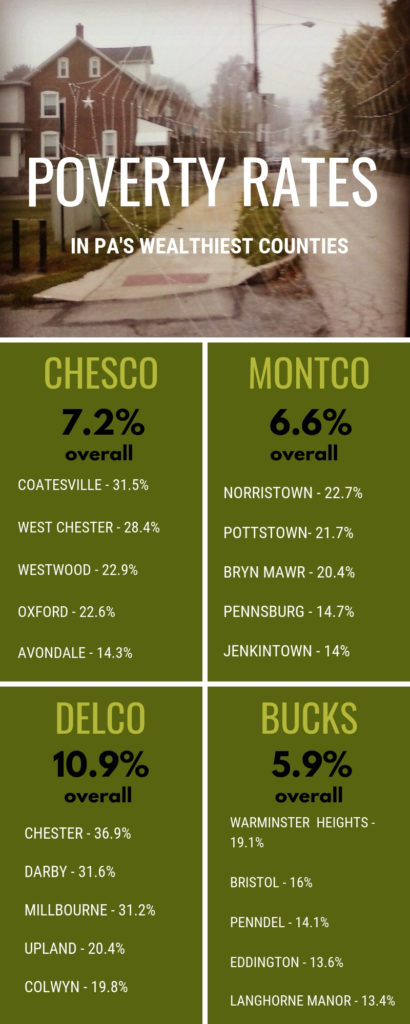March is going to The ‘Burbs
 March 6, 2019
Category: Featured, Purpose, Short
March 6, 2019
Category: Featured, Purpose, Short
The ‘Burbs.
Maybe, if you are old enough, the words call up the Tom Hanks movie in which the all-white residents of a suburban development are so discombobulated by the arrival of a family with accents and foreign habits that they use their leisure time and xenophobic paranoia to build a novel (and dysfunctional) sense of solidarity with neighbors they otherwise barely know.
Or maybe it’s the exburbs you envision — those areas beyond the suburbs that are often inhabited by well-to-do families — where the lawns are all manicured, every home is a McMansion, the schools have STEM academies and cappuccino machines in the lunchrooms, and the adults all commute into Philadelphia for their six-figure jobs.
Even if you don’t buy into the stereotypes, you might be forgiven for wondering what need could there possibly be for social impact organizations to work in Chester (median household income $88,995), Montgomery ($81,902), Bucks ($79,559), and Delaware ($66,576) counties when those four counties are the wealthiest counties in the state?
But, as Elizabeth Kneebone documented in her research for “Urban and Suburban Poverty: The Changing Geography of Disadvantage,” public perceptions of where poverty exists have not kept up with the times:
“The poor population in suburbs grew by 65 percent between 2000 and 2012, more than twice the pace of growth in big cities and rural communities. By 2012, the suburbs were home to three million more poor residents than big cities. What is more, as suburban poverty grew rapidly in the 2000s, it also moved beyond older, inner-ring suburbs that have long struggled with poverty alongside central cities to newer, exurban communities that may have previously seemed immune to these trends.”

(Data via https://www.welfareinfo.org/poverty-rate/pennsylvania/; image by Sabrina Vourvoulias)
Which means — in an analogy city dwellers can easily relate to — counties that on the outside may seem all Chestnut Hill (median household income $82,712) and Rittenhouse Square ($70,638) have some Kensington ($31,219) and Norris Square ($23,758) in them too.
During March, per our editorial calendar, we’ll be bringing you stories that introduce you to the real ‘Burbs: where poverty and need lives in ways like and unlike it does in Philadelphia, and where nonprofits are doing deeply necessary work to address startlingly stark divides in quality of life, well-being and opportunity.
What needs have you experienced living or working in The ‘Burbs? What are the issues hidden from cursory view? Who is doing work that has social impact in the townships and cities of Chester, Montgomery, Delaware and Buck counties? Tell us, and help us shape our coverage for the month.
Trending News









